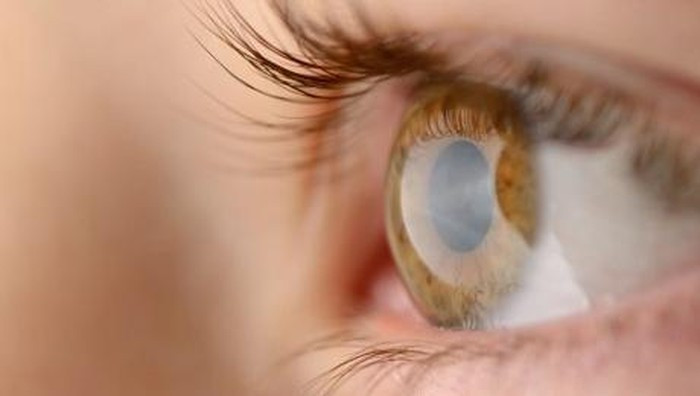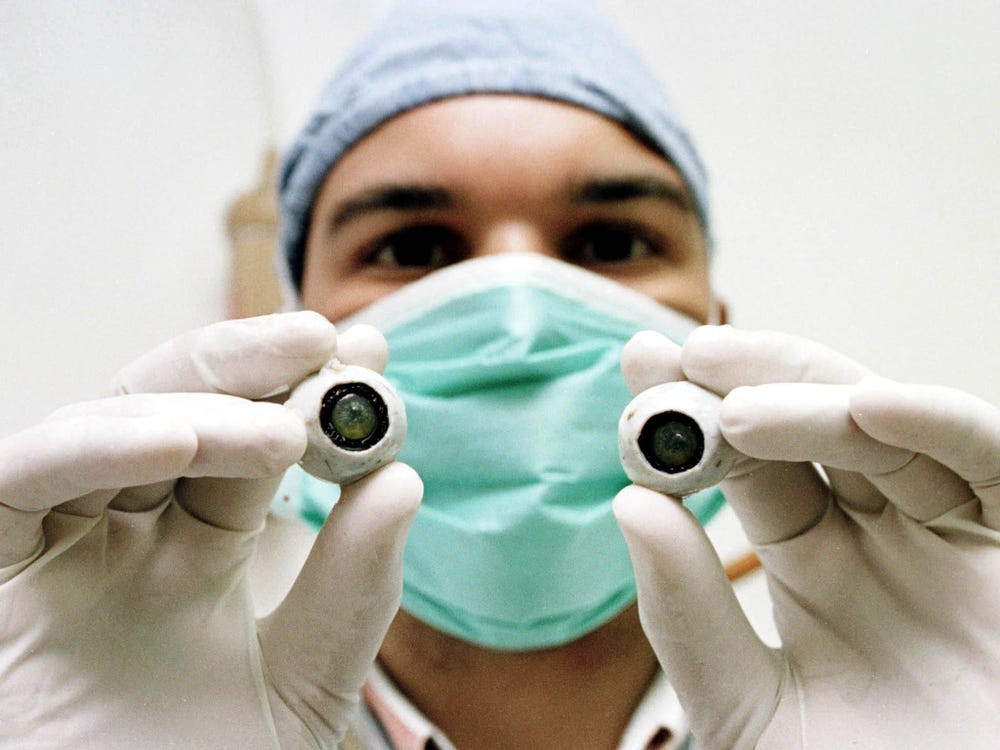Definition
Glaucoma is an eye condition that results from damage to the optic nerve or visual nerve. This damage can impair vision function. The optic nerve can be damaged due to abnormally increased eye pressure. Although it can occur at any age, glaucoma can cause blindness in individuals over 60.
Glaucoma can develop without any warning signs felt by the patient. Increased eye pressure can also occur gradually, so patients may not be aware that their optic nerve has begun to deteriorate.
Damage to the visual nerve caused by glaucoma cannot be cured and can lead to permanent blindness. This underscores the importance of regular eye examinations to detect glaucoma early and provide prompt treatment.
Causes
The increase in pressure can occur due to the buildup of eye fluid within the eye chamber. Eye fluid is produced normally and drains out through the angle between the iris and cornea. Fluid buildup can occur if there is excessive eye fluid production or a blockage in the drainage process. If this continues, eye pressure will increase, leading to glaucoma.
Below are the two most common types of glaucoma:
- Open-angle glaucoma is the most common type of glaucoma. It occurs when there is a blockage in the structures through which the eye fluid flows, causing a gradual increase in eye pressure. Damage to the visual nerve also occurs slowly, and patients may experience vision loss without realizing there is a problem with their optic nerve.
- Angle-closure glaucoma occurs when the iris is too close to the drainage angle formed by the cornea and iris. This prevents fluid from flowing properly and causes a continuous increase in eye pressure. Angle-closure glaucoma can happen suddenly (acute) or gradually (chronic). Sudden-onset angle-closure glaucoma is considered a medical emergency.
In addition to the above types, there are other rare forms of glaucoma, including:
- Normal-Tension Glaucoma
- Pigmentary Glaucoma
- Childhood Glaucoma
- Secondary Glaucoma
Risk factor
Several risk factors for chronic glaucoma include:
- High eye pressure
- Age over 60 years
- Family history of glaucoma
- Medical conditions such as diabetes mellitus, heart disease, high blood pressure, and sickle cell anemia
- Thinner central corneal layers
- Severe nearsightedness (myopia) or farsightedness (hypermetropia)
- History of eye injury or surgery
- Long-term use of corticosteroid eye drops
Symptoms
Symptoms of glaucoma vary depending on the type.
Open-angle glaucoma
- Blind spots or partial blindness in the peripheral or central vision. This can occur in both eyes.
- In severe cases, vision may be like tunnel vision, with a narrowing field of view, causing only the center to be visible while the surrounding vision is dark or missing.
Acute angle-closure glaucoma
- Severe headache
- Nausea and vomiting
- Blurred vision
- Seeing halos or light rings
- Eye redness
Diagnosis
Glaucoma diagnosis involves patient interviews about current complaints and a thorough medical history. The doctor will also explore any family history of eye diseases. Next, the doctor will conduct an eye examination. Several eye tests may include:
- Intraocular pressure measurement (tonometry)
- Visual field test to assess areas of vision loss
- Corneal thickness measurement (pachymetry)
- Examination of the drainage angle (gonioscopy)
- Optic nerve examination with eye dilation and radiologic tests
Management
The goal of treating glaucoma is to prevent vision loss caused by optic nerve damage. Lowering eye pressure is essential for managing the condition. The doctor will recommend treatment based on the disease's severity and the patient's preferred approach. Treatment options include:
- Medications: Eye drops can reduce eye pressure by decreasing eye fluid production. They should be applied directly to the eye, with the eyes closed for 1-2 minutes after application. If eye drops are not effective, oral medications may be prescribed.
- Surgery and Other Procedures:
- Laser therapy to open blocked fluid drainage channels.
- Trabeculectomy, creating a hole in the sclera (white part of the eye) and removing part of the trabecular meshwork, the angle between the cornea and iris.
- Drainage device implantation to remove excess eye fluid.
- Minimally invasive glaucoma surgery (MIGS) to lower eye pressure.
For acute angle-closure glaucoma, urgent treatment is required as it is an emergency. Follow-up visits are essential after treatment.
Complications
Untreated glaucoma can lead to blindness. Even after treatment, about 15% of patients may still risk blindness in one eye within 20 years.
Prevention
Preventing glaucoma requires careful attention, as it can develop gradually. Steps to prevent increased eye pressure include:
- Regular Eye Examinations
- Every 5-10 years for individuals under 40.
- Every 2-4 years for those aged 40-54.
- Every 1-3 years for those aged 55-64.
- Every 1-2 years for individuals over 65.
- History of eye diseases in the family
- Eat a healthy and nutritious diet.
- Use prescribed eye medications regularly.
- Wear eye protection during high-risk activities to prevent injury.
- Avoid smoking.
- Limit caffeine intake.
- Sleep with your head elevated.
When to see a doctor?
Seek medical attention if you experience vision problems. Visit an eye specialist for a thorough examination and prompt treatment. Watch for warning signs such as sudden vision loss, eye pain, or redness. Regular check-ups and monitoring for medication side effects are crucial after starting treatment.
Looking for more information about other diseases? Click here!
- dr Hanifa Rahma
Glaukoma - Symptoms and causes. Mayo Clinic. (2022). Retrieved 24 July 2022, from https://www.mayoclinic.org/diseases-conditions/glaukoma/symptoms-causes/syc-20372839.
Seltman, W. (2020). Glaukoma. WebMD. Retrieved 24 July 2022, from https://www.webmd.com/eye-health/glaukoma-eyes.
Glaukoma. nhs.uk. (2022). Retrieved 24 July 2022, from https://www.nhs.uk/conditions/glaukoma/.
Glaukoma | National Eye Institute. Nei.nih.gov. (2022). Retrieved 24 July 2022, from https://www.nei.nih.gov/learn-about-eye-health/eye-conditions-and-diseases/glaukoma.











